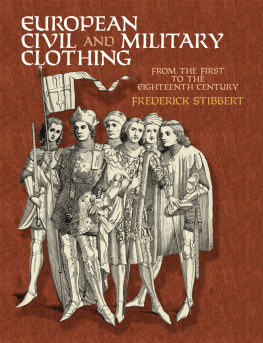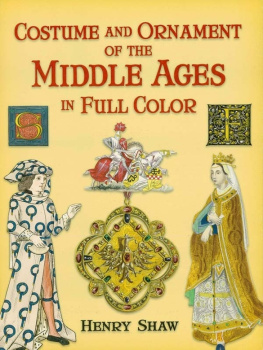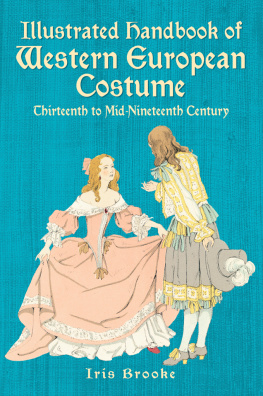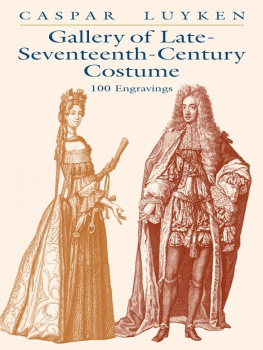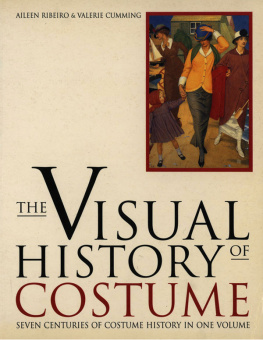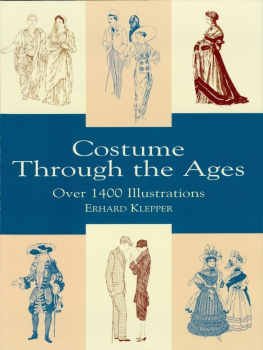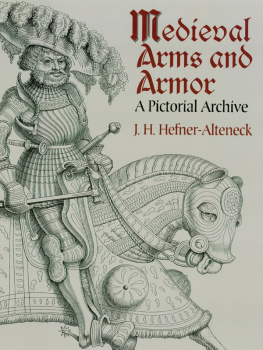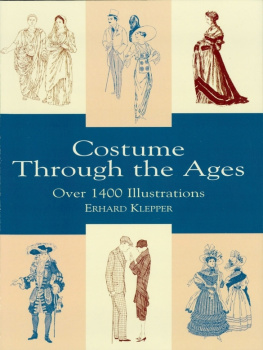European Civil and Military Clothing

From the First to the Eighteenth Century
Frederick Stibbert

Dover Publications, Inc.
Mineola, New York
Copyright Copyright 2001 by Dover Publications, Inc. All rights reserved.
Bibliographical Note This Dover edition, first published in 2001, is an unabridged reprint of the illustrations in
Abiti e Fogge Civile e Militari dal I at XVIII Secolo, by Frederick Stibbert, published by Istituto Italiano dArti Grafiche, Bergamo, Italy, in 1914. All the captions have been translated into English. A new Preface has been specially prepared for this new edition by Dr. Kirsten Aschengreen Piacenti, Director of the Stibbert Museum in Florence, Italy.
DOVER Pictorial Archive SERIES This book belongs to the Dover Pictorial Archive Series. You may use the designs and illustrations for graphics and crafts applications, free and without special permission, provided that you include no more than ten in the same publication or project. For permission for additional use, please email the Permissions Department at rights@doverpublications.com or write to Dover Publications, Inc., 31 East 2nd Street, Mineola, New York 11501. However, resale, licensing, republication, reproduction or distribution of any illustration by any other graphic service, whether it be in a book or in any other design resource, is strictly prohibited. Library of Congress Cataloging-in-Publication Data Stibbert, Frederic, d. [Abiti e fogge civili e militari dal I al XVIII secolo. [Abiti e fogge civili e militari dal I al XVIII secolo.
English] European civil and military clothing from the first to the eighteenth century/Frederick Stibbert. p. cm. (Dover pictorial archive series) An unabridged reprint of the illustrations in Abiti e fogge civili e militari dal I al XVIII secolo, first published in 1914. All the captions have been translated into English. Cf. Cf.
Bibliographical note. Includes bibliographical references. eISBN-13: 978-0-486-16220-1 1. CostumeEuropeHistory. 2. I. Title. II. II.
Series GT720 .S6813 2001 391.0094dc21 2001028620 Manufactured in the United States by Courier Corporation 41748402 2014 www.doverpublications.com
C ONTENTS
P REFACE
F REDERICK S TIBBERT : H IS L IFE AND W ORK
On the opening page of an album of watercolor drawings representing sixteenth-century knights and princesses is the following inscription: F. Stibbert/Original watercolor drawings for his Costume book/1868. Frederick Stibbert (18381906) inherited the family fortune in 1859, when he came of age (his father died when he was only four), and he started collecting immediately. The brief comment in his sketchbook, written a few years later, clearly tells us that the intention of compiling a history of costume was at the back of his mind from the very beginning. Indeed, it was probably the inspiration for most of the objects that he was to acquire during the next fifty years. The project of the history remained vivid throughout his life, as witnessed by the sketchbooks that he gradually filled with drawings drawn from paintings, tomb slabs, monumental sculptures, etc.
From 1877 onward he started having the copper plates engraved. He employed three well-known engravers: the Neapolitan Leonardo de Vegni, and from 1887 the Genoese Filippo Livy and Vincenzo Stanghi from Florence. A note not yet engraved/ 1899/F.S., added in pencil to the above quotation, indicates that as late as 1899 this preparatory work had not yet been completed. In his will Stibbert stipulated that his heir, Count Roberto Pandolfini, was to arrange for the publication, and he left 10,000 lire (about $1 million in todays money) specifically for this purpose. In 1914 the first edition of Abite e Fogge Civili e Militari (150 copies) was printed by the Istituto Italiano dArti Grafiche in Bergamo. By 1937 these were sold out.
After the Second World War the local bank, Cassa di Risparmio della Toscana, had a facsimile version made for private distribution. And somewhere along the line an English version was published in the United States. For many years Stibberts history, in any language, has been out of print, and it is with great pleasure that the Stibbert Museum greets the present republication. It is not only a tribute to the extraordinary man who was the founder of the museum that bears his name, it is also the surest way to understand the moving spirit of this great collector. Through this volume we apprehend the reason for the long series of sixteenth-century portraits of the Spanish royal family to be found in the museum; the vast collection of arms and armor from Europe, Japan, and the Islamic world; the numerous costume prints and illustrated books in the library; and the garments themselves, including rare examples of Elizabethan doublets and sixteenth-century Venetian shoes. The museum may seem heterogeneous and eclectic at first sight, but there was a unifying vision behind the 56,000 objects that Stibbert left to the city of Florence.
This book is the visual expression of his deep interest in the way people moved, dressed, and livedanywhere, at any time. Frederick Stibbert was born in Florence, and died there. His father had been a colonel in the Coldstream Guards, his grandfather governor-general of Bengal, India, whence the family fortune originated. His mother was Italian, and it was her villa on the Montughi hill that Frederick, or Federigo, transformed into his museum. Situated in the midst of its own park, surrounded by the olive groves and vineyards of its own farm, it is still a verdant oasis only ten minutes outside hectic Florence. As his collection grew, Stibbert bought an adjacent villa and built a great Knights Hall to connect the two houses.
He further commissioned a faade to serve as the unifying factor of all three elements, and added the large ballroom. His mothers garden was a typical formal Italian giardino that Stibbert turned into a romantic English park, with temples, loggias, cascades, and a little lake where he could boat in the summer. Though deeply attached to his mother and her native Tuscany, Stibbert was educated in England, at Harrow and later Cambridge, and his years in England as well as the friends he made there were highly influential to his outlook and interests. At the age of twenty one he returned to Italy and for a brief moment took part in the stirring events of the times, serving in Garibaldis army against the Austrians. He was awarded a medal for military valor, and his name is inscribed on a plaque under the Loggia dei Lanzi, in Florence, which lists the Florentine youths who served with distinction in the Italian War of Independence. After this brief interlude he dedicated the rest of his life to his collection, which soon took the shape of a museummy museum he called it, on which I have spent so much care and money.
He also kept a careful watch over his inherited fortune, leaving it intact, if not larger, at his death. By about 1880 the museum was already a reality, and Queen Victoria was among the first visitors during her stays in Florence. In 1887, on the occasion of the unveiling of the new faade, Stibbert opened his museum to all and sundry for three weeks. The faade was designed in the neo-Gothic style, and three days of medieval pageants were organized to celebrate its completion. There was even a formal ball in the city hall (Palazzo Vecchio), in which Stibbert took an active part. But besides that he evidently felt that his museum was so much in character that it ought somehow to be incorporated in the celebrations.

